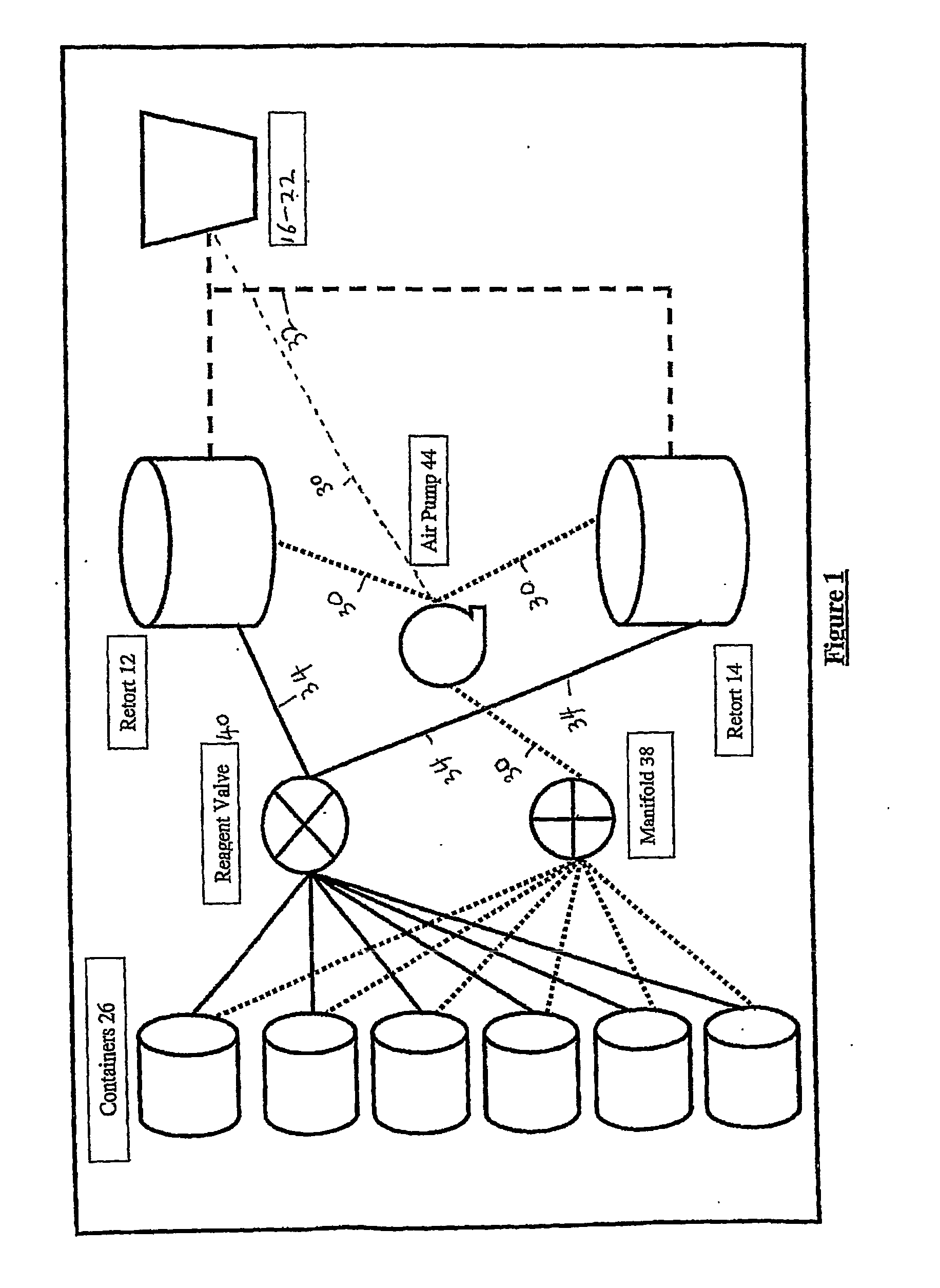System and Method for Histological Tissue Specimen Processing
a tissue specimen and tissue technology, applied in the field of tissue specimen processing system and method, can solve the problems of exposing laboratory workers to hazardous environment, xylene is considered toxic, and the tissue sample is still not capable of accepting paraffin, so as to achieve the effect of increasing the throughput of tissue sample processing and reducing the quantity
- Summary
- Abstract
- Description
- Claims
- Application Information
AI Technical Summary
Benefits of technology
Problems solved by technology
Method used
Image
Examples
Embodiment Construction
[0223] The present invention has particular application in the operation of a tissue processor for processing tissue samples for histological analysis, such as that described in International PCT Application No. PCT / AU02 / 01337, publication No. WO 03 / 029845, titled; “Histological Tissue Specimen Treatment”, published 10 Apr. 2003 and filed by the present applicant. In its preferred form, the present invention may be utilised as a method and means for managing resources and scheduling protocols in the operation of a tissue processor such as disclosed in WO 03 / 029845 and, it will be convenient to hereinafter describe the invention in relation to the tissue processor disclosed in that application. It should be appreciated, however, that embodiments of the present invention are not limited to that particular application, only.
[0224] The following detailed description of preferred embodiments of the present invention provide logical workflows, which in turn illustrate the functionality o...
PUM
| Property | Measurement | Unit |
|---|---|---|
| lean angle | aaaaa | aaaaa |
| melting temperature | aaaaa | aaaaa |
| temperature | aaaaa | aaaaa |
Abstract
Description
Claims
Application Information
 Login to View More
Login to View More - R&D
- Intellectual Property
- Life Sciences
- Materials
- Tech Scout
- Unparalleled Data Quality
- Higher Quality Content
- 60% Fewer Hallucinations
Browse by: Latest US Patents, China's latest patents, Technical Efficacy Thesaurus, Application Domain, Technology Topic, Popular Technical Reports.
© 2025 PatSnap. All rights reserved.Legal|Privacy policy|Modern Slavery Act Transparency Statement|Sitemap|About US| Contact US: help@patsnap.com



